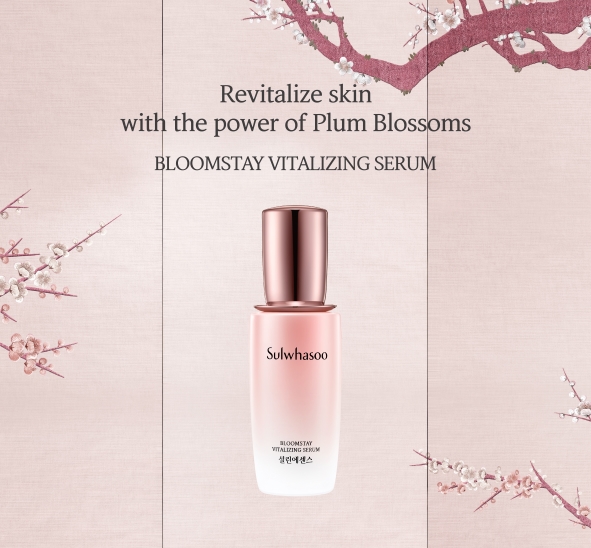Cosmetics & Personal Care
Protective role of ‘pyruvate’ against skin cellular senescence 22nd April 2019
By Kil In-sup, Chief Researcher at Amorepacific's R&D Center Bioscience Lab
Kil In-sup, Chief Researcher at Amorepacific's R&D Center Bioscience Lab, explains how Amorepacific is focusing on studies of
Kil In-sup, Chief Researcher at Amorepacific’s R&D Center Bioscience Lab, explains how Amorepacific is focusing on studies of highly effective functional metabolites with low toxicity/side effects. Here, he details his research on the effects of ‘pyruvate’ on skin cellular senescence.
Organisms age as time goes by, or due to external stimuli. During this process, skin becomes wrinkled, while skin elasticity and barrier functions are reduced. Therefore, the development of effective substances which inhibit the cellular aging process is an important task. Amorepacific’s R&D Center conducted studies on the anti-aging effect of metabolites in cells. As a result, it was discovered that ‘pyruvate’, a metabolite produced during the decomposition of glucose, exhibits a potent anti-aging effect. This study was published in the Journal of Investigative Dermatology as a cover story in December 2018,1 and is summarized here.
How the research started
This research began when we found that aging skin cells absorb more extracellular pyruvate. As a joint research project with Kim Jung-yeon, a researcher in the laboratory of Professor Song Yong-wook in the rheumatology department of Seoul National University Hospital, human skin cells were cultured with and without pyruvate and various aging markers were measured to compare aging. The results were also verified in artificial skin, further recognising the potential for pyruvate as an anti-aging effect component.
How it works
When human fibroblasts are cultured, pyruvate enters the cell and produces a well-known substance of NAD + nicotinamide adenine dinucleotide as a potent anti-aging agent. This allows pyruvate to promote the degradation of abnormal mitochondria and reduce free radicals. It has also been shown that the expression of a senescence-associated secretory phenotype (SASP) is reduced, thereby inhibiting skin cell senescence. In particular, through the research of artificial skin models, it has been found that pyruvate deficiency causes aging of dermal cells, which inhibits the growth and differentiation of the epidermal layer, resulting in a phenomenon similar to the aging of human skin. Thus, it could be expected that pyruvate may exhibit a potent anti-aging effect even in real human skin.
What sets this research apart from previous studies?
Past methods of inhibiting aging mostly used either the natural products present in plants or synthesized compounds. However, pyruvate is a metabolite already present in human blood so it is characterized by low toxicity and few side effects. In addition, when cultured in vitro, a large number of cells are cultured using a culture medium containing 1 mM pyruvate. This is 20 to 30 times higher than the actual concentration in human blood. This research confirms that the use of culture medium containing pyruvate when screening for anti-aging and antioxidant materials resulted in masking the effect of these substances due to the anti-aging and antioxidant effects of pyruvate itself. For this reason, we studied the aging model in the conditions in which pyruvate is contained similar to the actual human blood concentration because this anti-aging substance screening method will provide a similar environment as an actual in vivo environment. Through this process, we identified the anti-aging effect of the plum blossom extract, which is the main component of ‘Sulwhasoo Bloomstay Vitalizing’ line.
Going forward, it is necessary to re-examine the function of pyruvate present in human blood, which was previously simply regarded as an intracellular energy source. In particular, it has been demonstrated that pyruvate is involved in improving the function of mitophagy responsible for the degradation of abnormal mitochondria among autophagy, which degrades intracellular components or organelles. This result is expected to be applicable to various research fields.

Application to the luxury beauty brand Sulwhasoo
Notably, this research result was applied to the ‘Sulwhasoo Bloomstay Vitalizing’ line launched by Amorepacific in 2018. An aging cell model deficient in pyruvate was used to screen for substances exhibiting an actual anti-aging effect. As a result, it was found that the plum blossom extract had an excellent anti-aging and antioxidant effect and was included in three products in the Sulwhasoo Bloomstay Vitalizing line, including Bloomstay Vitalizing Cream, Bloomstay Vitalizing Water and Bloomstay Vitalizing Serum.
Reference
1. Kim JY et al. J Invest Dermatol 2018;138:2522–30 (doi: 10.1016/j.jid.2018.05.033)



